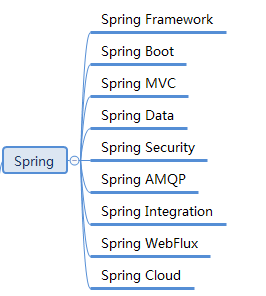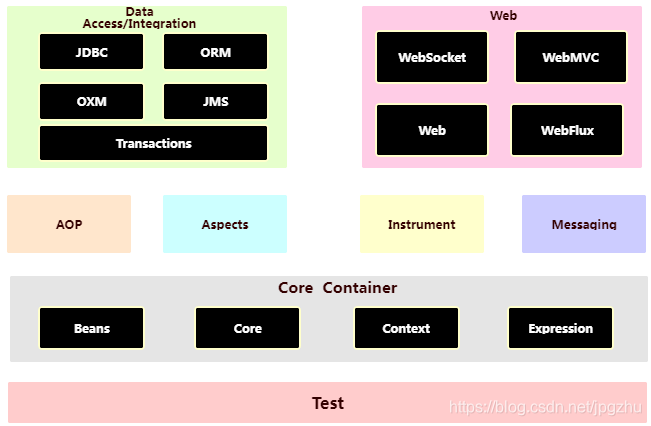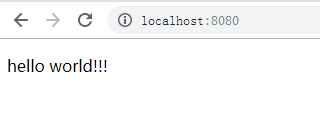背景
- Spring早已经成为企业级开发的业界标准,尤其是Spring Boot 2.0、Spring 5发布后,Spring的生态系统引领了技术架构发展的潮流,对于Java开发人员,深入掌握Spring全家桶的各种框架应用及必要的底层原理知识,是一件非常重要的事情。
学习路线图

Spring的基础知识
什么是Spring
Spring的核心是提供了一个容器(container),通常称为Spring应用上下文(Spring application context),它们会创建和管理应用组件。这些组件也可以称为bean,会在Spring应用上下文中装配在一起,从而形成一个完整的应用程序。
将bean装配在一起的行为是通过一种基于依赖注入(dependency injection,DI)的模式实现的。此时,组件不会再去创建它所依赖的组件并管理它们的生命周期,使用依赖注入的应用依赖于单独的实体(容器)来创建和维护所有的组件,并将其注入到需要它们的bean中。通常,这是通过构造器参数和属性访问方法来实现的。
Spring框架核心模块

SpringBoot
在历史上,一般通过两种配置方式为Spring应用上下文提供Bean
- 使用一个或多个XML文件描述bean
- 使用@Configuration注解会告知Spring这是一个配置类
随着Spring Boot 2.x的引入,Spring自动配置的能力已经大大加强,Spring Boot能够基于类路径中的条目、环境变量和其他因素合理猜测需要配置的组件并将它们装配在一起。Java程序员尽可能多地使用Spring Boot,只有在必要的时候才使用显式配置。
第一个Spring应用DEMO
- 在IntelliJ IDEA中创建新项目

- 通过地址为https://start.spring.io/初始化项目;

- 指定项目通用信息:

- 选择项目Starter:

- 生成的项目结构:

- maven规范
<?xml version="1.0" encoding="UTF-8"?>
<project xmlns="http://maven.apache.org/POM/4.0.0" xmlns:xsi="http://www.w3.org/2001/XMLSchema-instance"
xsi:schemaLocation="http://maven.apache.org/POM/4.0.0 https://maven.apache.org/xsd/maven-4.0.0.xsd">
<modelVersion>4.0.0</modelVersion>
<parent>
<groupId>org.springframework.boot</groupId>
<artifactId>spring-boot-starter-parent</artifactId>
<version>2.3.1.RELEASE</version>
<relativePath/> <!-- lookup parent from repository -->
</parent>
<groupId>com.example</groupId>
<artifactId>demo</artifactId>
<version>0.0.1-SNAPSHOT</version>
<name>demo</name>
<description>Demo project for Spring Boot</description>
<properties>
<java.version>1.8</java.version>
</properties>
<dependencies>
<dependency>
<groupId>org.springframework.boot</groupId>
<artifactId>spring-boot-starter-web</artifactId>
</dependency>
<dependency>
<groupId>org.springframework.boot</groupId>
<artifactId>spring-boot-starter-test</artifactId>
<scope>test</scope>
<exclusions>
<exclusion>
<groupId>org.junit.vintage</groupId>
<artifactId>junit-vintage-engine</artifactId>
</exclusion>
</exclusions>
</dependency>
</dependencies>
<build>
<plugins>
<plugin>
<groupId>org.springframework.boot</groupId>
<artifactId>spring-boot-maven-plugin</artifactId>
</plugin>
</plugins>
</build>
</project>
可参见本人博客《Maven POM( Project Object Model,项目对象模型 )》及《一图说清maven常见要素》这两篇文章。
- 入口类
/**
* SpringBoot应用
*/
@SpringBootApplication
public class DemoApplication {
public static void main(String[] args) {
// 运行应用
SpringApplication.run(DemoApplication.class, args);
}
}
@SpringBootApplication是一个组合注解,它组合了3个其他的注解。
- @SpringBootConfiguration:将该类声明为配置类。尽管这个类目前还没有太多的配置,但是后续我们可以按需添加基于Java的Spring框架配置。这个注解实际上是@Configuration注解的特殊形式。
- @EnableAutoConfiguration:启用Spring Boot的自动配置。我们随后会介绍自动配置的更多功能。就现在来说,我们只需要知道这个注解会告诉SpringBoot自动配置它认为我们会用到的组件。
- @ComponentScan:启用组件扫描。这样我们能够通过@Component@Controller、@Service这样的注解声明其他类,Spring会自动发现它们并将它们注册为Spring应用上下文中的组件。

8. 测试类
// SpringBoot测试
@SpringBootTest
class DemoApplicationTests {
// 测试方法
@Test
void contextLoads() {
}
}
- 程序启动

编写自己的第一个SpringMVC例子
- 第一个Controller
index()是一个简单的控制器方法。它带有@GetMapping注解,表明如果针对“/”发送HTTP GET请求,那么这个方法将会处理请求。该方法所做的只是返回String类型的index值,该控制器方法中还通过Spring自动注入IndexService服务组件,及调用服务组件方法。
/**
* 第一个SpringMVC程序--Controller层
*
* @author zhuhuix
* @date 2020-07-02
*/
@Controller
public class IndexController {
// Spring注入服务组件
@Autowired
private IndexService indexService;
@GetMapping("/")
public String index(Model model) {
String index = indexService.getIndex();
model.addAttribute("index", index);
// 返回视图 即index.html
return "index";
}
}
- 第一个Service
getIndex()是一个简单的服务方法。该方法所做的只是返回String类型的index值,该服务组件供控制层调用。
/**
* 第一个SpringMVC程序--Service层
* * @author zhuhuix
* @date 2020-07-02
*/
@Service
public class IndexService {
public String getIndex() {
return "hello world!!!";
}
}
- 第一个View
-- 使用Thymeleaf模板引擎
### application.properties
###ThymeLeaf配置
spring:
thymeleaf:
#模板的模式,支持 HTML, XML TEXT JAVASCRIPT
mode: HTML5
#编码 可不用配置
encoding: UTF-8
#内容类别,可不用配置
content-type: text/html
#开发配置为false,避免修改模板还要重启服务器
cache: false
#配置模板路径,默认是templates,可以不用配置
prefix: classpath:/templates
-- 定义index.html视图层
<!DOCTYPE html>
<html xmlns:th="http://www.thymeleaf.org" >
<head>
<meta charset="UTF-8"/>
<title>Title</title>
</head>
<body>
<p th:text="${index}" />
</body>
</html>
- 运行测试

尝试使用Spring Boot DevTools
•代码变更后应用会自动重启;
•当面向浏览器的资源(如模板、JavaScript、样式表)等发生变化时,会自动刷新浏览器
- pom.xml
<dependencies>
<dependency>
<groupId>org.springframework.boot</groupId>
<artifactId>spring-boot-devtools</artifactId>
<optional>true</optional>
<scope>runtime</scope>
</dependency>
...
</dependencies>
<build>
<plugins>
<plugin>
<groupId>org.springframework.boot</groupId>
<artifactId>spring-boot-maven-plugin</artifactId>
<configuration>
<!--fork : devtools生效必须设置成true -->
<fork>true</fork>
</configuration>
</plugin>
</plugins>
</build>
- idea设置
-- 需勾选Build project automaticallty

-- ctrl+alt+shift+/ :Registry 中第一项必须打勾

回顾总结
- Spring核心框架:Spring核心框架是Spring领域中一切的基础。它提供了核心容器和依赖注入框架。
- Spring Boot:Spring Boot构建在Spring之上,通过简化依赖管理、自动配置和运行时洞察,使Spring更加易用;
- Spring MVC:我们通过SpringBoot初始化生成的框架上加入Controller,Service,View的分层,编写了第一个Spring MVC程序,并成功运行。
- 使用Idea开发环境,安装Spring Boot DevTools并进行配置,提高了开发效率。
